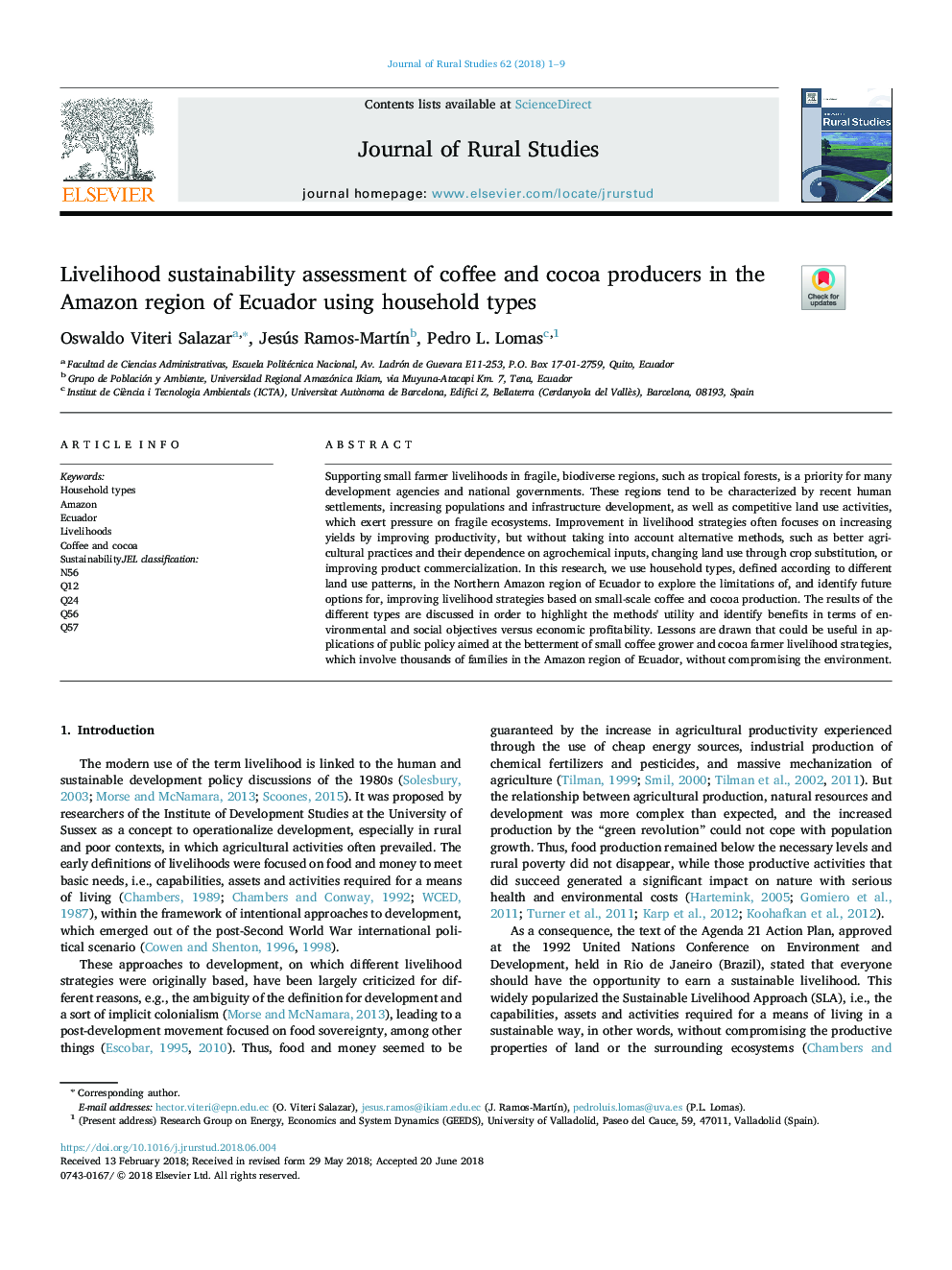| Article ID | Journal | Published Year | Pages | File Type |
|---|---|---|---|---|
| 6545215 | Journal of Rural Studies | 2018 | 9 Pages |
Abstract
Supporting small farmer livelihoods in fragile, biodiverse regions, such as tropical forests, is a priority for many development agencies and national governments. These regions tend to be characterized by recent human settlements, increasing populations and infrastructure development, as well as competitive land use activities, which exert pressure on fragile ecosystems. Improvement in livelihood strategies often focuses on increasing yields by improving productivity, but without taking into account alternative methods, such as better agricultural practices and their dependence on agrochemical inputs, changing land use through crop substitution, or improving product commercialization. In this research, we use household types, defined according to different land use patterns, in the Northern Amazon region of Ecuador to explore the limitations of, and identify future options for, improving livelihood strategies based on small-scale coffee and cocoa production. The results of the different types are discussed in order to highlight the methods' utility and identify benefits in terms of environmental and social objectives versus economic profitability. Lessons are drawn that could be useful in applications of public policy aimed at the betterment of small coffee grower and cocoa farmer livelihood strategies, which involve thousands of families in the Amazon region of Ecuador, without compromising the environment.
Related Topics
Life Sciences
Agricultural and Biological Sciences
Forestry
Authors
Oswaldo Viteri Salazar, Jesús Ramos-MartÃn, Pedro L. Lomas,
